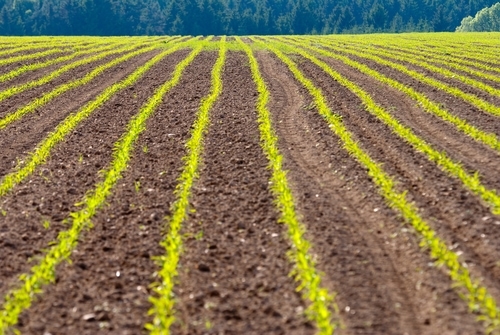In early December, three pet food recalls were initiated due to aflatoxin levels above the ‘acceptable’ limit.
On December 6, 2011, Cargill Animal Nutrition announced a voluntary recall of two brands of dry dog food, River Run and Marksman.
You can find more specifics about this recall at FDA.gov.
Also on December 6th, Procter & Gamble voluntarily recalled Iams ProActive Health Smart Puppy dry dog food. More details can be found here.
On December 8th, Advanced Animal Nutrition did a voluntary recall of Dog Power dry food formulas. The FDA’s recall press release provides additional details.
In December of last year, Kroger food stores also did a recall of several brands of dry dog and cat food for possible aflatoxin contamination.
Do The Recalled Dog Food Formulas Have Anything in Common?

The Cargill site doesn’t list the ingredients for their dog food products, but I was able to find them elsewhere for one of the River Run formulas.
Advanced Animal Nutrition’s website is www.nitropet.com, and while I couldn’t find any mention of Dog Power formulas, I did find a NITRO 25-14 Hunter’s Formula, which I assume is similar to the Dog Power hunter’s formula.
The following is a list of the first five ingredients in each formula:
Cargill’s River Run Hi-Pro No-Soy
- Meat and bone meal
- Ground corn
- Wheat middlings
- Rice bran
- Corn gluten meal
P&G’s Iams ProActive Health Smart Puppy
- Chicken
- Corn meal
- Chicken by-product meal
- Ground whole grain sorghum
- Dried beet pulp
Advanced Animal Nutrition’s NITRO 25-14 Hunter’s Formula
- Poultry meal
- Corn meal
- Brewers rice
- Poultry fat
- Beet pulp
As you can see, corn in various forms is the second ingredient in each of these foods.
If we were to convert the mystery meat and mystery poultry meal and chicken ingredients to their dry matter weights, they’d slide on down the list, allowing the primary main ingredient in all three formulas – corn – to assume its proper place at the top.
So Is Corn the Problem?
Not only is corn an extremely allergenic food and difficult to digest, it’s one of the three crops most highly contaminated with aflatoxins (the other two are peanuts and cottonseed).
Corn is typically grown in climates that have year-round aflatoxin contamination.
Cereals are another source of frequent aflatoxin contamination, including maize, sorghum, pearl millet, rice and wheat. Looking again at the first five ingredients in the three recalled dog foods, we see wheat middlings, rice bran, more corn in the form of corn gluten meal, sorghum, still more corn meal, and brewers rice.
In other words, the primary ingredients in all three formulas are some of the most potentially aflatoxin-contaminated foods in existence.
Aflatoxins
Aflatoxins are metabolic waste products of the Aspergillus flavus fungus, and like all mycotoxins are capable of causing disease and death. In fact, aflatoxins are considered to be among the most cancer-causing agents on the planet.
The disease caused by aflatoxins is called aflatoxicosis, and in animals it primarily involves the liver.
If a pet gets sick from aflatoxin-contaminated food, symptoms can include:
- Severe vomiting, bloody diarrhea, discolored urine
- Loss of appetite
- Lethargy
- Fever
- Jaundice
If you think your pet has ingested contaminated food, even if she seems fine at the moment, get her to your vet or an emergency animal clinic as soon as possible. It’s a good idea to bring her food with you. It’s important to also report a contaminated food.
I also recommend you consult your holistic vet for recommendations on natural liver detoxifiers like milk thistle, SAMe and chlorophyll.
A Few Tips for Feeding Safer Food to Your Pet
- A good start would be to transition your pet away from all dry food. If that’s not possible, the next best thing is to carefully study the ingredients in the dry food you buy your pet, and stay away from formulas that primarily consist of grain and corn in any form.
- Learn where your dog’s or cat’s current diet falls on my list of 13 Pet Foods – Ranked from Great to Disastrous. If the food you’re serving is lower on the list than you’d like, make a commitment to gradually increase the quality as your budget permits.
- If you’re worn out from worrying about pet food recalls and reading mind-boggling product labels, you might want to think about making your pet’s meals right in your own kitchen, from scratch. It’s the best way to exercise complete control over the quality and purity of the food you feed your furry loved ones.
Dr. Karen Becker is a proactive and integrative wellness veterinarian. You can visit her site at: MercolaHealthyPets.com.
Her goal is to help you create wellness in order to prevent illness in the lives of your pets. This proactive approach seeks to save you and your pet from unnecessary stress and suffering by identifying and removing health obstacles even before disease occurs. Unfortunately, most veterinarians in the United States are trained to be reactive. They wait for symptoms to occur, and often treat those symptoms without addressing the root cause.
By reading Dr. Becker’s information, you’ll learn how to make impactful, consistent lifestyle choices to improve your pet’s quality of life.
